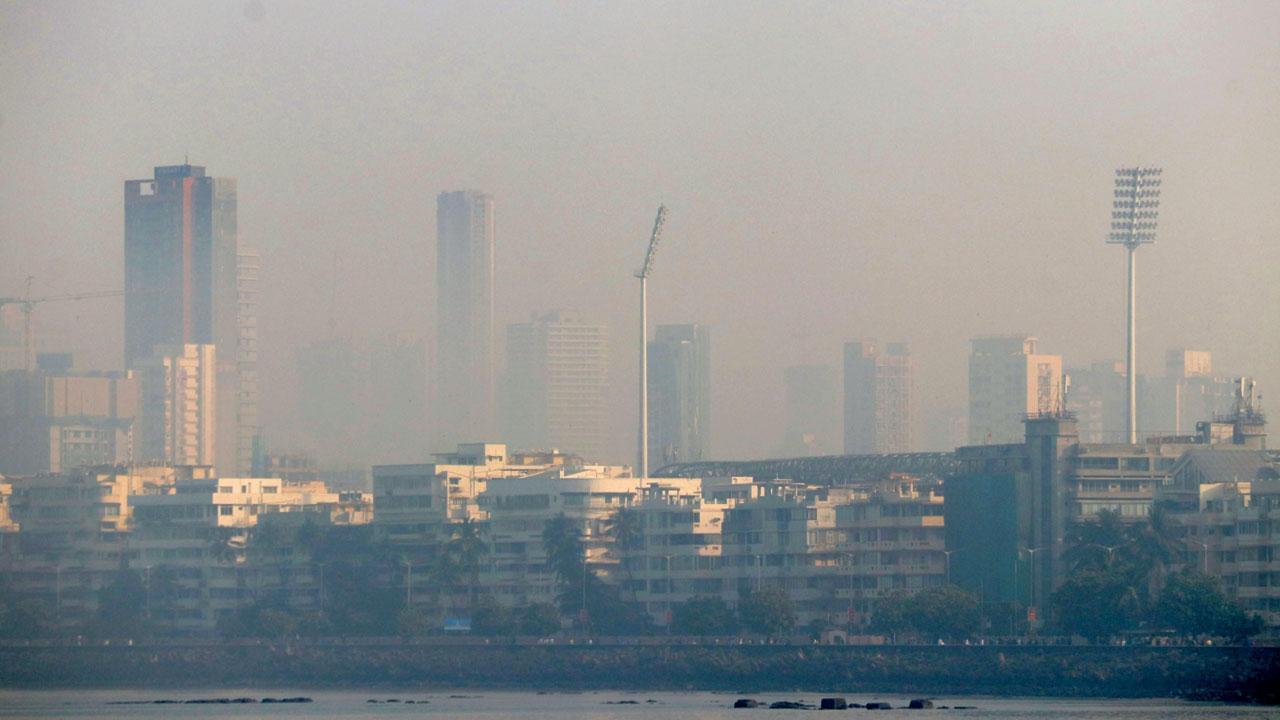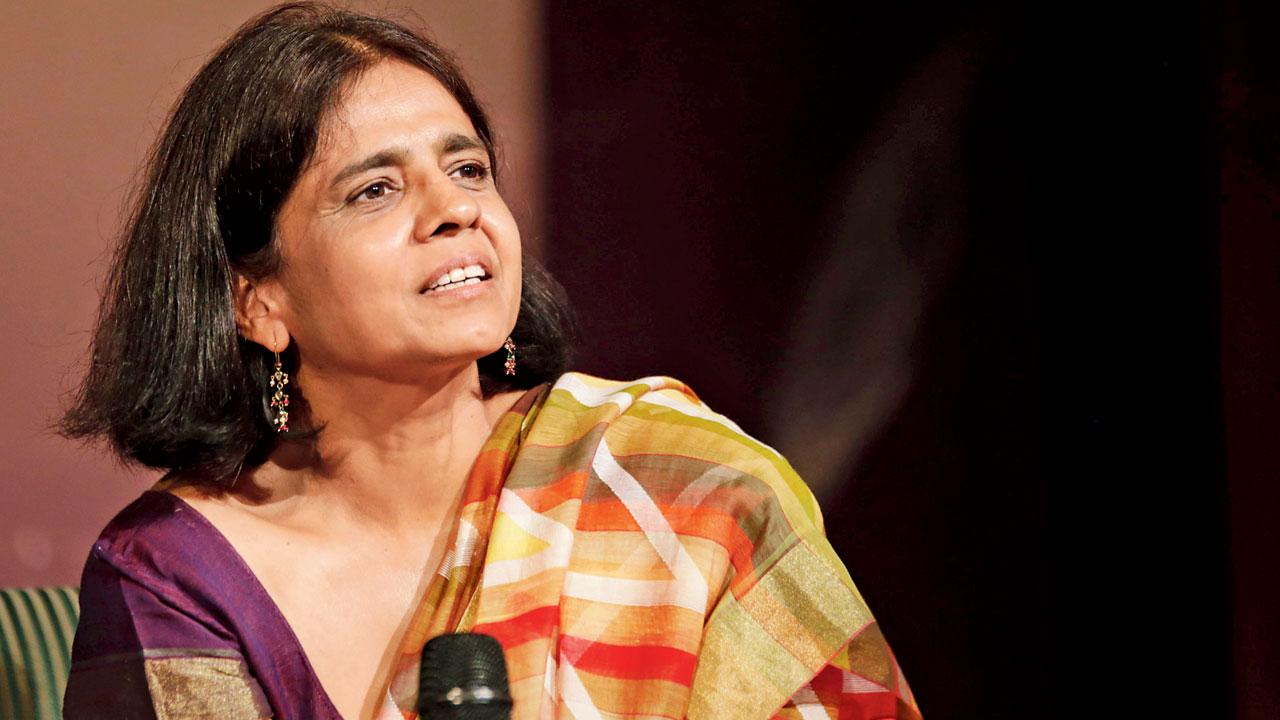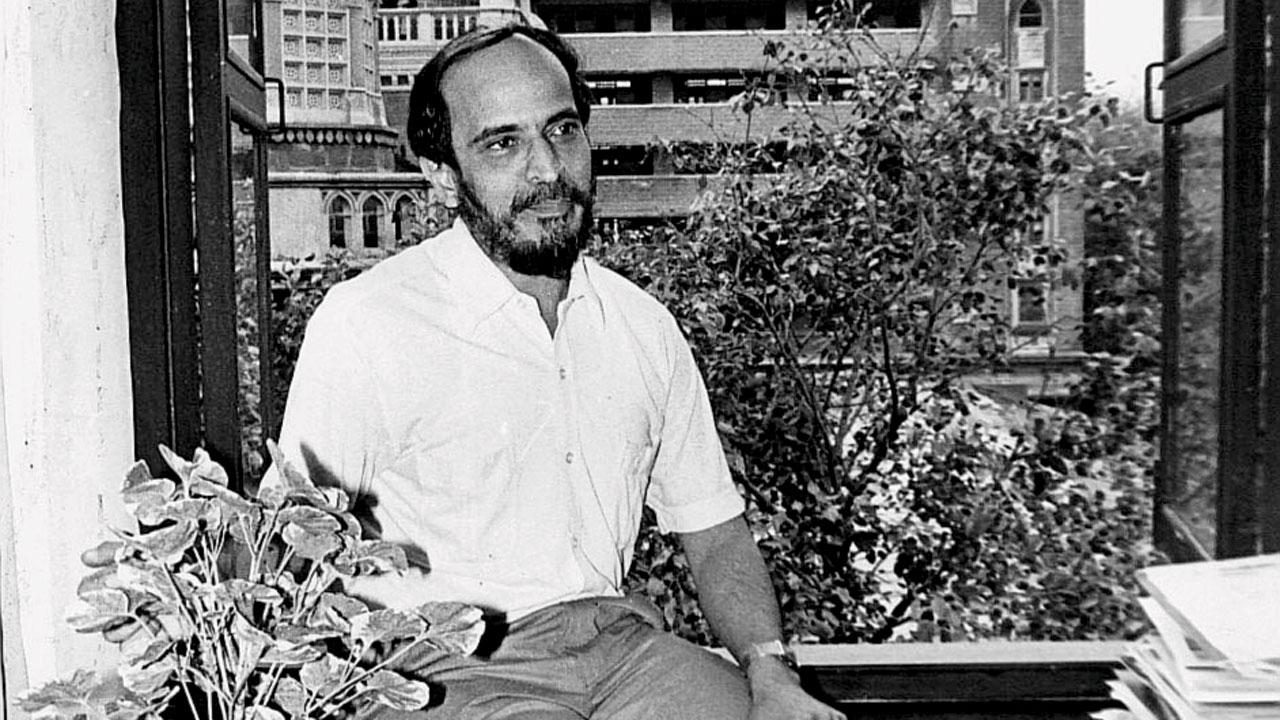Ahead of her lecture at a Mumbai venue this weekend, Director General of the Centre for Science and Environment, Sunita Narain, speaks with mid-day on the crises faced by Mumbai, India and potential solutions

Smog envelops the buildings along Marine Drive. File Pics
On Saturday, the Mumbai Marathi Patrakar Sangh Auditorium will host a lecture that expands on the work of the late journalist Darryl D’Monte. Known for his untiring crusade for the green spaces of Mumbai, the late editor will be honoured through the second annual Darryl D’Monte Memorial Lecture by Sunita Narain, director general of Centre for Science and Environment (CSE). Ahead of her lecture titled Climate Change in an Increasingly Unequal and Polarized World: The Future Agenda for Action, she speaks to us about her learnings from the recent COP28 in 2023, Mumbai’s falling air quality and public transport.
ADVERTISEMENT
Edited excerpts from the conversation.
Your talk comes on the back of your recent visit to COP28 in Dubai where you also spoke about the equitable distribution of the energy burden. How does this translate into action going forward?
Sunita Narain: This has been a contested issue for many decades since the world agreed upon a framework convention of climate change. Energy is at the core of the transition that is needed. The fact also is that energy is part of the economic growth system of each country. This is why negotiations on an equitable energy transition have been difficult.

Sunita Narain
In Dubai, for the first time, we have the recognition in documents that fossil fuels are a problem. It now comes down to the action agenda. For a country like India, it is very clear that, in our best interest, we need to find a way to grow without pollution. For instance, take the issue of mobility. We know that if we were to reduce the number of cars on the road, it would help us reduce emissions and air pollution. But this would mean scaling up public transport and improving last mile connectivity. The right to walk and the right to cycle are all part of the plan ahead and need to be looked at.
In this context, Mumbai has been in the limelight for falling air quality, pollutants and rising construction. How does a city balance its need for development with the risk of environmental damage?
SN: In Mumbai, it is not just construction. Our data clearly shows that it is a factor of all four pollutants — vehicles on the road, use of coal in industries on the periphery, waste burning and dust from construction. Dust, per se, is not a pollutant, but when it is coated with emissions, it becomes one. Moving ahead, Mumbai needs to strategise accordingly. You cannot tackle [just] one issue to find a solution.
Limiting dust from construction is easy through sprinkling of water, barricading and regular monitoring, etc. They are not foolproof, but are mitigating measures. With vehicular emission, the only way is to augment public transport. Mumbai is better than Delhi in its usage of suburban railway networks, but is still growing at a fast rate in terms of vehicle ownership. This is clearly something that the city has to factor in when coming up with a plan.
I was happy to note on a recent visit that there are quite a few electric cars and taxis in Mumbai, but there is a need for more; like how Delhi moved its auto rickshaws and buses to CNG. This would require a mandate and massive investment that enables the rickshaw drivers and public transport owners — who are not rich or privileged — to agree to such measures. Then, of course, is the use of coal in the industries on the peripheries of the city. The only alternative is to provide them with affordable gas, but that is not available to India at affordable rates. Essentially, we need to take hard and tough measures, and we are not doing it either in Mumbai, Delhi or around the world. This will be part of my talk ahead.
How will these measures fall in place when there is an immediate need for growing infrastructure, that adds to the man-animal conflict, as is witnessed in Mumbai?
SN: Many people believe, and rightly so, that infrastructure is a necessity. Faster and smoother connectivity will reduce time and fuel consumption. My argument is that along with these new road infrastructures, we need to plan scaled up systems of transportation through buses and trains rather than cars. The experience around the world teaches us that the more you build, the more cars will fill up the space.

Darryl D’Monte
Even now in Mumbai, as in Delhi, only 20 to 30 per cent of the population utilise cars and two-wheelers. If the infrastructure is not planned intelligently today, there will be no road space left. No matter how many links you build through the sea or around it, they will be filled up. As far as the man-animal conflict is concerned, we need to recognise and find a way to address it. Urban India needs a strategy. It is something we need to discuss, and not just pass it on.
Does this imply that there is a need for civil society in Mumbai, Delhi to step up and have a more active role in how infrastructure is shaped, particularly in view of the climate crisis?
SN: The crisis is growing. We all need to be part of the discussions and engaged. If we are not, we are like ostriches with our heads buried in the sand. People in Mumbai would often say ‘Delhi is so polluted’. I would tell them Mumbai has the same sources of pollution. The only advantage is the sea breeze. You don’t feel the pollution, but that does not mean it isn’t there. You need to deal with the source. Today, it is hitting home in Mumbai.
Air pollution is a great equaliser. If the poor in the city do not have access to clean energy, the rich will have to breathe the same air. Climate change teaches us that we cannot act alone. Everybody needs to be part of the solution, and nobody is safe till everybody is safe. We need development, and we also need a sea link. But we need to find ways to mitigate any potential damage. I don’t have specific details, but we need to move carefully on the issue.
This makes the lecture, and the talk in the name of the late Darryl D’Monte all the more relevant.
SN: I strongly believe that change in society comes through an understanding of issues. This understanding has to be in depth, nuanced and rigorous. It is not about bland overarching statements. Darryl D’Monte stood for this — the investigation, the rigour and the analysis. That’s why the lecture in Darryl’s name is so important. Journalists are a major part of the solution.
On: February 3; 6 pm to 7.30 pm
At: Mumbai Marathi Patrakar Sangh Auditorium, Mahanagarpalika Road, near Azad Maidan.
 Subscribe today by clicking the link and stay updated with the latest news!" Click here!
Subscribe today by clicking the link and stay updated with the latest news!" Click here!







